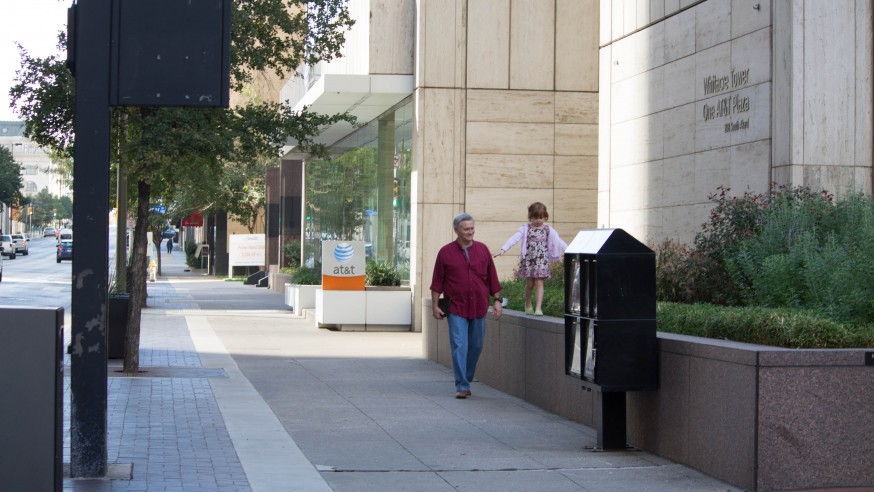UTA Institute of Urban Studies to investigate walkability of downtown Dallas
It’s home to the Dallas Arts District, the Dallas Convention Center, Dallas Area Rapid Transit trains and the headquarters of AT&T, Hunt Consolidated and Comerica Bank. But is downtown Dallas walkable? And what would the city have to do to make it more so?
The University of Texas at Arlington’s College of Architecture, Planning and Public Affairs is partnering with the city of Dallas to find out.
Students from CAPPA’s Institute of Urban Studies are embarking on an analysis of pedestrian traffic along 184 street segments and 66 intersections throughout downtown. The results will be used to development improvements to the street-level experience for people who work, live and visit downtown.
Student researchers will evaluate characteristics including density, block size, noise levels, parks and landscapes and building uses. The study will capture the number of active storefronts, patio spaces, parks, proximity to light rail and employment concentrations in the downtown area.
The downtown Dallas walkability study highlights UTA’s commitment to shaping sustainable urban communities as outlined in the University’s Strategic Plan 2020: Bold Solutions | Global Impact.
One of the primary objectives of the Dallas’ Department of Economic Development is to implement Downtown 360, the strategic plan first adopted by the Dallas City Council in 2011 as the collective vision for the downtown Dallas community.
The plan acknowledges challenges facing downtown, including streets that can be unfriendly to pedestrian activity. The Downtown 360 plan generally identifies vehicular circulation, broken sidewalks, physical obstructions, inconsistent landscaping and tree canopy, and a lack of buffers to fast-moving traffic as impediments to downtown’s walkability.
City of Dallas Economic Development Director Karl Zavitkovsky said the UTA study will provide insight on pedestrian activity and the built environment, helping to shape downtown economic development and design decisions.
“A better understanding of pedestrian activity and the areas that are most appealing for walking will greatly help our plans to further improve downtown’s ground floor,” Zavitkovsky said, adding that the Institute was a natural fit for the study his department needed.
See more at: http://www.uta.edu/news/releases/2016/07/CAPPA-Dallas-walkability.php#sthash.lnfjxzY6.dpuf.





